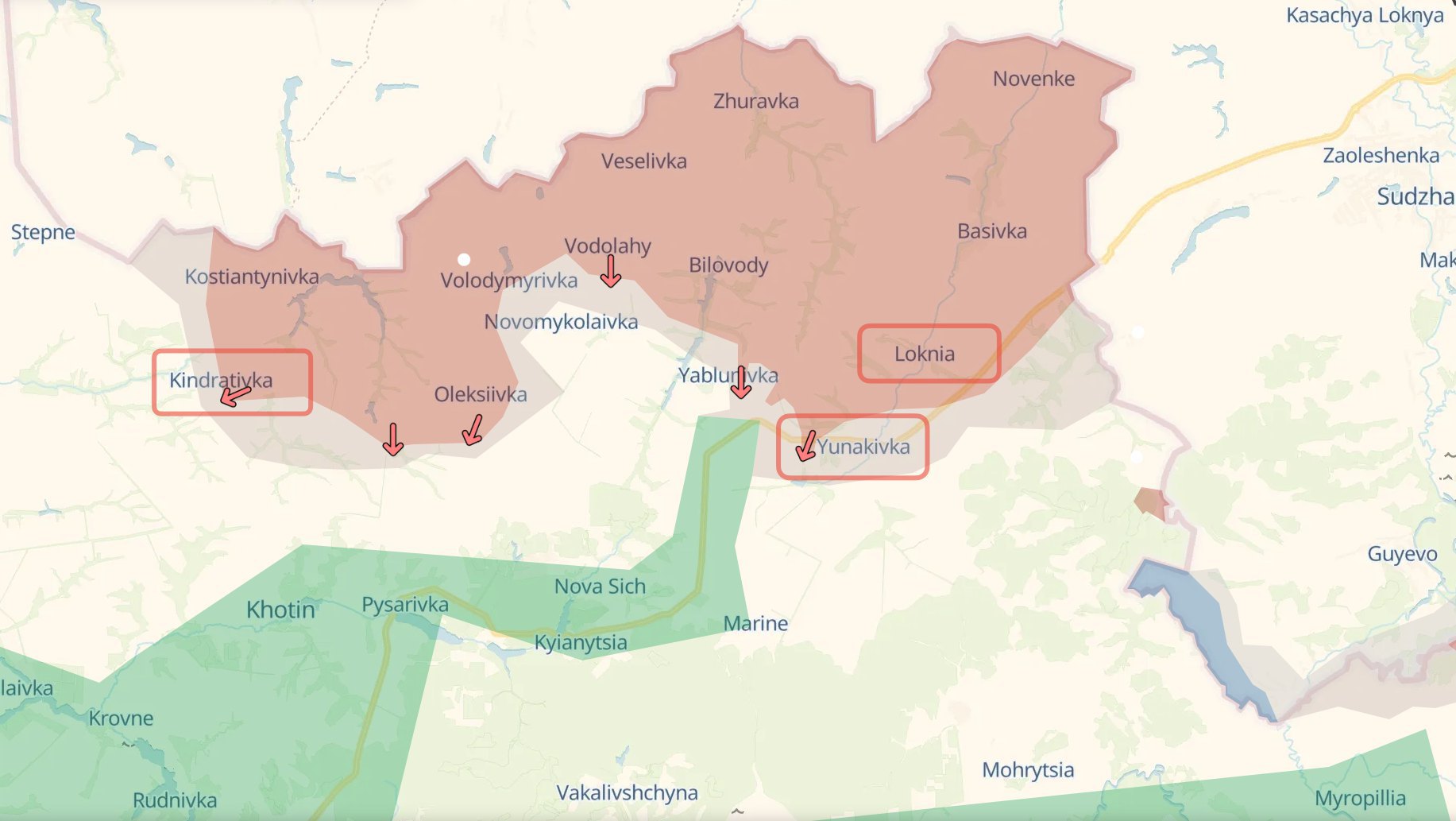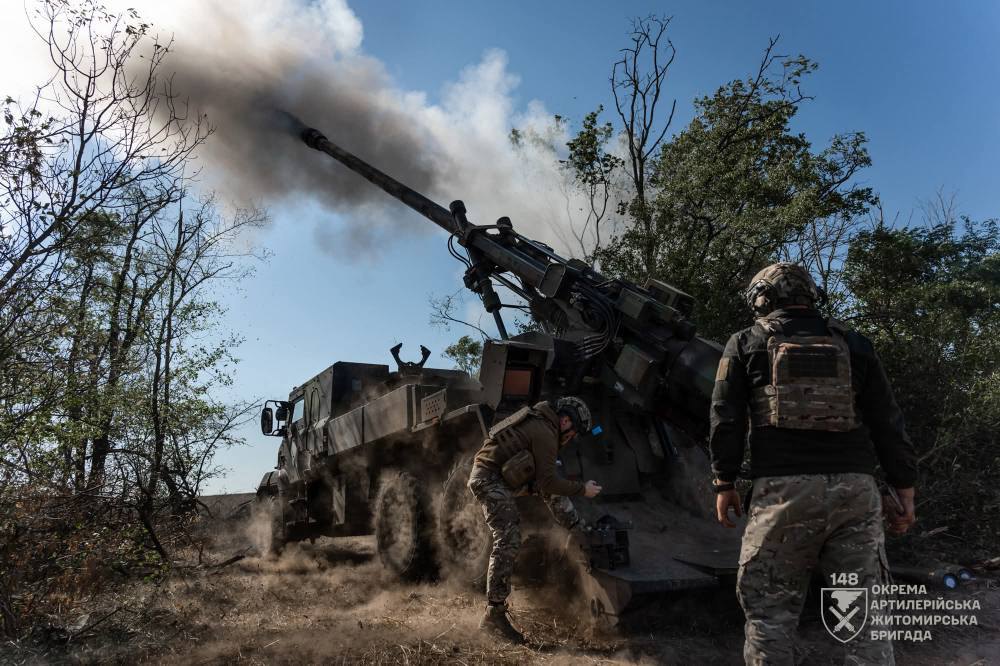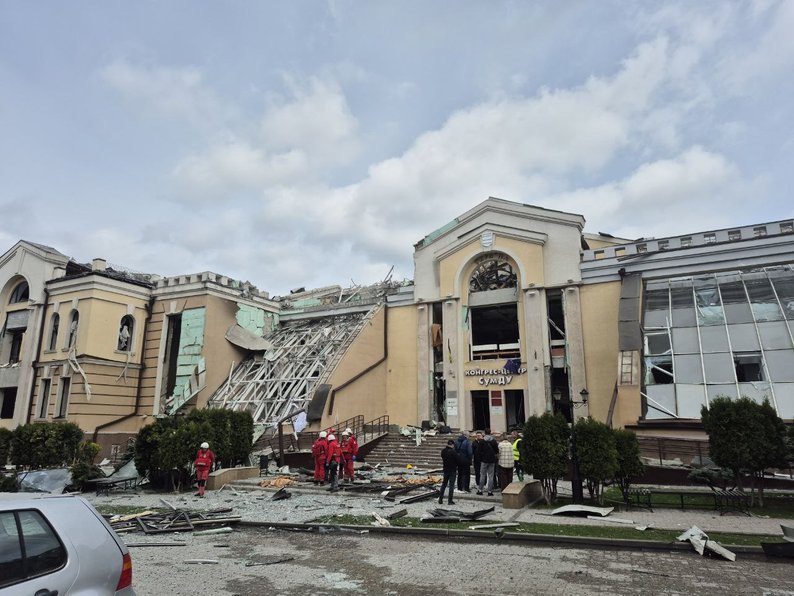
The salient opposite Sverdlikove, along the Kindrativka – Loknya line, essentially constitutes a foothill. It is 4–5 km deep, flanked by plantations and a protrusion of Russian territory. No plans were made to bring in heavy equipment, construct major fortifications, or erect fences in this area.
This is because foothills serve as lines of combat protection – strips of observation posts, surveillance cameras and watchpoints – not zones for concrete bunkers and barriers.
Furthermore, since 2022, drone and artillery strikes in the area have not ceased. Deploying diggers or cranes this close to the line of contact would mean the likely destruction of such equipment. Large garrisons were never stationed here – there was a border screen in place, but nothing more.
Consider Basivka, which lies exposed across open fields, already constrained by the Russian border and lacking significant water barriers. Even if the area were reinforced with concrete and garrisoned by a battalion, the enemy could traverse the fields, sever supply routes, disrupt communication antennas, and destroy the garrison.
It is therefore clear that maintaining a line of long-term combat positions (LBZ) directly along the border is untenable. While evacuation from villages is indeed distressing, in truth, it should have been initiated in 2022. The Kremlin is employing a scorched earth strategy in this region – targeting farms, draining ponds, displacing residents, and demolishing communication towers to compel civilian departure.

Evacuations ought to have been conducted on a schedule advantageous to us, with abandoned villages mined and fortified manually. However, local populations are understandably reluctant to leave until guided aerial bombs (KABs) begin falling near their homes or shops.
Additionally, it is not solely a question of strongpoints – of concrete and barbed wire. There is a widespread, yet misguided belief that fortifications alone serve as a universal solution.
Despite existing fortifications, positions are being flanked by motorbikes and buggies, infiltrated by infantry units, targeted by drones armed with incendiary mixtures, and struck by KABs from close range. Even when inaccurate, such strikes are repeated persistently, churning the ground and disrupting both evacuations and rotations.
Moreover, in the months following the construction of defensive lines, the nature of warfare has evolved significantly. The emergence of drones equipped with large explosive payloads due to lightweight batteries, incendiary UAVs, various North Korean self-propelled artillery systems, and large-calibre mortars – including 60 mm North Korean designs – has rendered traditional defences insufficient. Today, blocked gaps and two-pitched dugouts no longer guarantee protection. What is required now are subterranean systems built into the reverse slopes of elevations, metallised nets with large meshes to counter fibre optics, netting and shelters for logistics, and a framework for constant repair and renewal.

Importantly, the situation is far from easy for Moscow. Although Russian forces are attacking in large numbers, their gains remain limited and their losses significant – entire companies rendered inoperable within days.
This is because the strike was launched in an area where Ukraine had been preparing and retains operational flexibility. A substantial logistics hub operates in the rear, allowing for remote mining operations, the transfer of drone pilots from other sectors, continued construction work, and reinforcement of reserves from deeper positions.
The key objective at this stage is to neutralise towed artillery and remote drone operators targeting supply lines.
Yes, the situation is dangerous – but it would have been considerably more perilous had the Kremlin initiated such an assault a year earlier instead of being bogged down near Sudzha.
The most important point remains: Sumy is currently safe from direct assault and street fighting.
“There are no grounds for evacuation from the city of Sumy at the moment,” reports the Regional Military Administration (RMA).

Still, it is worth questioning: how secure can a large regional centre located near the border truly be, when subjected to artillery bombardment and surveillance by fibre-optic drones? Residents of Kherson know the reality all too well – Russian forces will even target bread trucks and ambulances.
Therefore, individuals must realistically assess their roles and responsibilities. Those not involved in critical infrastructure, defence, or the military-industrial complex should prepare accordingly. The security environment is likely to deteriorate in the months ahead.
The war continues. Russian military is exerting pressure across multiple sectors, exploiting both numerical and aerial superiority. The summer of 2025 is set to be exceptionally intense – and bloody.







